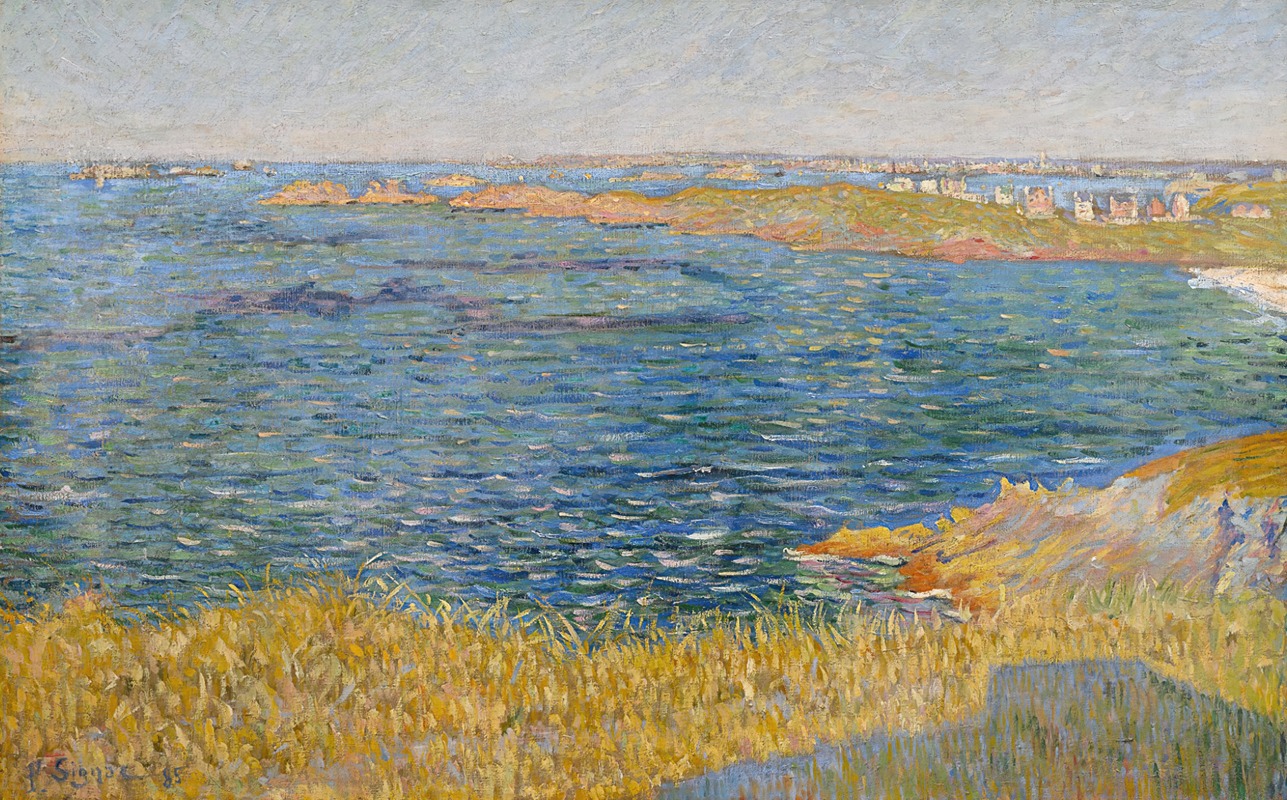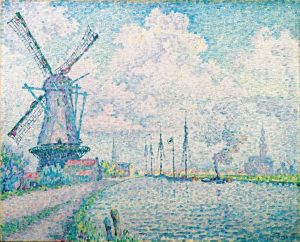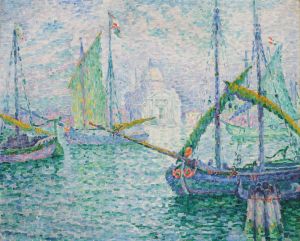
Saint-Briac. La Pomelière
A hand-painted replica of Paul Signac’s masterpiece Saint-Briac. La Pomelière, meticulously crafted by professional artists to capture the true essence of the original. Each piece is created with museum-quality canvas and rare mineral pigments, carefully painted by experienced artists with delicate brushstrokes and rich, layered colors to perfectly recreate the texture of the original artwork. Unlike machine-printed reproductions, this hand-painted version brings the painting to life, infused with the artist’s emotions and skill in every stroke. Whether for personal collection or home decoration, it instantly elevates the artistic atmosphere of any space.
"Saint-Briac. La Pomelière" is a painting by the French artist Paul Signac, created in 1886. Signac was a prominent figure in the Neo-Impressionist movement, which was characterized by the use of pointillism, a technique involving the application of small, distinct dots of color to form an image. This painting is an excellent example of Signac's early work and his exploration of this innovative style.
Paul Signac was born in Paris in 1863 and initially studied architecture before deciding to pursue a career as a painter. He was heavily influenced by the works of Claude Monet and Georges Seurat, the latter of whom he met in 1884. Seurat's scientific approach to color and light had a profound impact on Signac, leading him to adopt and further develop the technique of pointillism.
"Saint-Briac. La Pomelière" depicts a serene landscape in the small coastal village of Saint-Briac-sur-Mer, located in Brittany, France. The painting captures the tranquil beauty of the region, with its lush greenery and calm waters. Signac's use of vibrant colors and meticulous brushwork creates a sense of harmony and balance, reflecting the peaceful nature of the scene.
The composition of the painting is carefully structured, with the foreground featuring a path that leads the viewer's eye into the distance. The middle ground is dominated by a cluster of trees, while the background showcases the expansive sky and distant horizon. Signac's attention to detail and his ability to convey the effects of light and atmosphere are evident in the way he renders the various elements of the landscape.
Signac's choice of subject matter and his technique were influenced by his interest in the scientific theories of color and perception. He believed that by using small dots of pure color, he could create a more luminous and vibrant image than traditional methods allowed. This approach was rooted in the principles of optical mixing, where the viewer's eye blends the individual dots of color to create a cohesive whole.
"Saint-Briac. La Pomelière" is a testament to Signac's skill as a painter and his dedication to the Neo-Impressionist movement. The painting exemplifies his ability to capture the essence of a place through his innovative use of color and technique. It also reflects his deep appreciation for the natural beauty of the French countryside, which would remain a central theme in his work throughout his career.
Today, Paul Signac is celebrated as one of the leading figures of Neo-Impressionism, and his works are held in major museums and collections around the world. "Saint-Briac. La Pomelière" remains an important piece in the history of art, illustrating the evolution of modern painting and the enduring appeal of the Neo-Impressionist style.


















